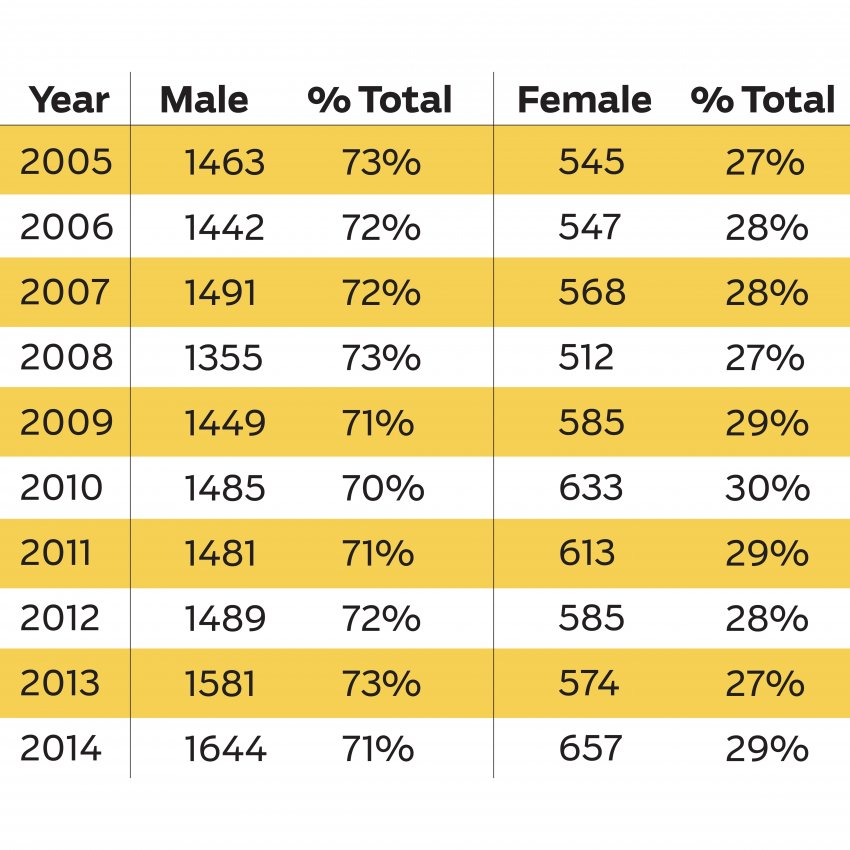Toward the end of my full-time clinical career, I attended a speech by a physician who encouraged doctors to “own” their online personas. He said we should actively manage our social media presence, our clinic websites, and our ratings by third-party sites like Angie’s List and Yelp. Against my instincts, I took his advice and Googled myself. Reader, I don’t mean to be histrionic. Many factors contributed to the end of my clinical career. But that innocent internet search did not, to put it lightly, make me excited to show up for work the next day:
I don’t share this anecdote as a bid for your pity. My experience with online ratings represents a tiny fraction of the “feedback” that a politician or a college football coach gets daily. I share the story as an entree to a question: do online physician ratings accurately reflect the quality of care people receive? If the ratings are accurate, then we should encourage our employees to use them. If they’re inaccurate, we should encourage employees (and practitioners) to ignore the ratings.
This is no idle inquiry. Some studies have suggested that up to 60 percent of patients consider online reviews important in choosing a provider. A recent national survey (paywall) of Americans aged 50 to 80, the heart of an internist’s practice like mine, revealed that more than 40 percent had looked up a physician’s rating for themselves at some time in their lives. Women, people with higher education levels, and (predictably) people with at least one chronic condition were more likely to have looked up a physician rating. The investigators in the recent study looked at several factors contributing to how prospective patients chose a physician, and online ratings came in only ninth, behind factors like “accepts my health insurance” and “convenient office location.” But the physician’s rating was still considered important almost as often as word-of-mouth reputation among family and friends, consistent with the results of smaller surveys.
But the ratings themselves are less influenced by clinical outcomes, like death, infection, or well-being, than they are by the patient’s experience. As we’ve blogged about before, denial of a patient request, especially for pain medications or lab tests, results in a dramatic decrease in patient satisfaction. That is surely poison for an online rating, regardless of the appropriateness of the denial. A very sophisticated study of dentist ratings showed that things like wait time were strongly associated with higher ratings, while raters barely mentioned clinical outcomes like infection or tooth loss. These experience-centric ratings may also reinforce biases that we already know exist. One study showed that, globally, male surgeons were rated higher on technical skills, while female surgeons were more highly rated for interpersonal skills.
It’s hard to tell if the ratings correlate with those harder clinical outcomes. A study of orthopedic surgeons’ online ratings found no correlation between ratings and total knee replacement outcomes. And one study found that the design of the rating website itself, like the presence or absence of advertisements for other doctors on the page, affected the quality of the data. But there is a hint of better outcomes in certain situations. A retrospective study showed that patients who had hip replacement surgery at hospitals highly ranked on physician rating sites did slightly better than patients at lower-ranked hospitals, for example.
If we can draw any conclusions from this muddled body of research, it seems that the most important lessons are, first, patients should understand the limitations of online reviews. A negative review of a highly skilled oncologist who has a gruff bedside manner may obscure the fact that his staff has experience in steering patients into clinical trials that may help complex cases. His staff’s skill may only be known by other providers. And second, doctors need to learn to use their online reviews as a source of quality improvement data. Someone who gives a doctor a lousy review may well have a valid complaint. The patient experience in American healthcare hardly has a sterling reputation. Instead of simply bristling at negative reviews, doctors should use the reviews as a tool to enact positive change.
As the Medical Director of the Kansas Business Group on Health I’m sometimes asked to weigh in on hot topics that might affect employers or employees. This is a reprint of a blog post from KBGH.















